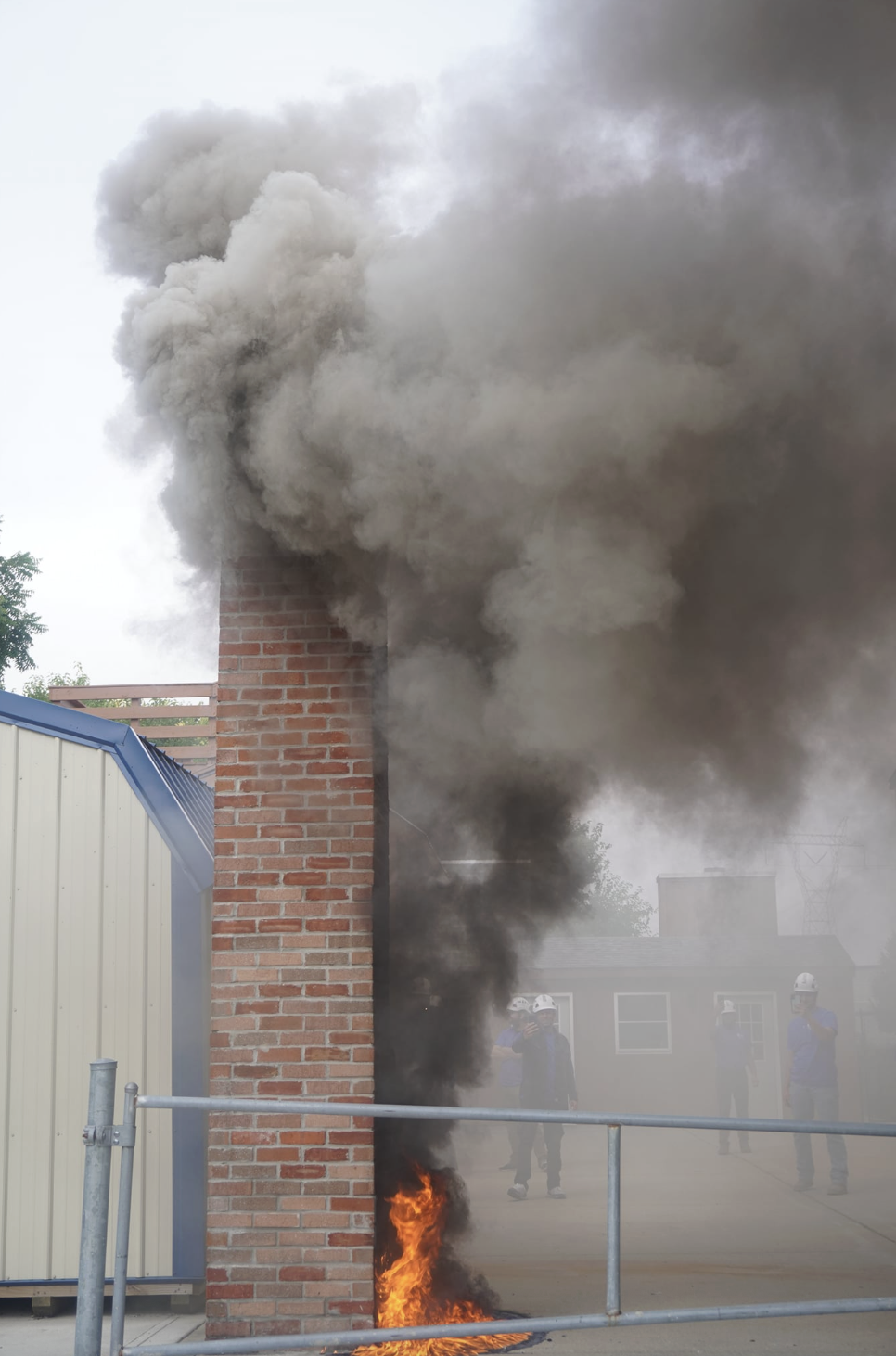What You need to know after a chimney fire
This information was made available to your fire department courtesy of The Chimney Safety Institute of America.
chimney fire faqs
What should I do if damage is found?
Most chimney fire damage is considered to be a covered loss under the terms of your homeowners’ insurance. Ask your sweep to document - with photos - the damaged sections of chimney and/or creosote found during evaluation, and provide documentation before the chimney is swept. These items will help your insurance adjuster process a repair claim. If your Certified Chimney Sweep® offers repair services, you will want to ask for a written repair estimate to give to your adjuster.
Can I use my chimney?
It is advised that you do not use your chimney until it has been swept and evaluated by a qualified chimney professional. The chimney may have suffered joint failure, metal fatigue, or structural cracking as a result of fire in the flue. Oftentimes these damaged areas cannot be seen from above or below.
What should I expect to pay for the sweep and evaluation?
Prices vary from region to region. The training, knowledge, and equipment needed to do a thorough evaluation is expensive and you should expect a charge for the services rendered. The cost of repair will depend on the extent of damage, the difficulty of repair and the materials used (as with most things in life, you get what you pay for).
What should be done before I use my chimney?
The first step is to find a qualified chimney professional. Your chimney may need to be professionally swept to expose all the areas of the chimney to be inspected. The Chimney Safety Institute of America maintains a website listing all CSIA Certified sweeps in the area searchable by zip code. You can search for professionals here. Qualified sweeps are trained to thoroughly sweep the chimney without making a mess. Modern day sweeps use drop cloths and vacuums to keep the house clean. They also are equipped with a variety of brushes and rods, both hand and mechanically driven. CSIA Certification requires an understanding of National Fire Protection Association (NFPA) standards of inspection and the International Residential Code.
What did the fire department do?
While responding to a chimney fire, the job of the fire department is to contain, control, and suppress the fire. The scope of their training does not include the cleaning, inspection, and evaluation of the chimney.
Once the chimney is swept, what’s next?
The next step is to do an internal video inspection. A small video camera is connected to sweep rods and either lowered down the chimney or run up the chimney from below. The camera lens is rotated within the chimney to check the integrity of all component parts in the chimney. The flue tiles are checked for cracks. At the same time, the mortar joints will be checked to make sure that they didn’t fail when super heated. If the chimney is made of metal, it will be examined for joint separation, fatigue, warping, buckling or open seams such that it could no longer contain the products of combustion. Pictures can usually be downloaded from the video inspection camera. You may want to ask for copies of any photos taken of damaged areas.


